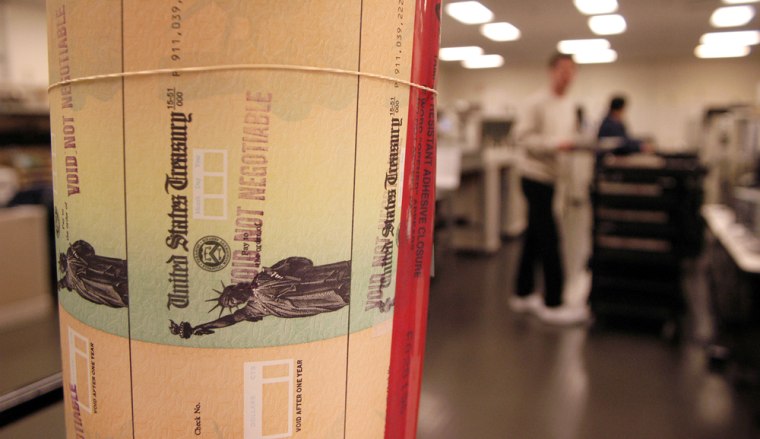Social Security benefits for 50 million people will go up 5.8 percent next year, the largest increase in more than a quarter century.
The increase, which will start in January, was announced Thursday by the Social Security Administration. It will mean an additional $63 per month for the average retiree.
It’s the largest increase since a 7.4 percent jump in 1982 and is more than double the 2.3 percent rise that retirees got in their monthly checks starting in January of this year.
The typical retiree’s monthly check will go from $1,090 currently to $1,153.
But the fatter Social Security check may still seem puny to millions of retirees battered this year by huge increases in energy and food costs who have also watched helplessly as their retirement savings have been assaulted by the biggest upheavals on Wall Street in seven decades.
“Right now many senior citizens are feeling depressed because things seem out of control. They feel like they are in a boat being whipped around by rough seas,” said Sung Won Sohn, an economics professor at the Smith School of Business at California State University. “Their purchasing power has been going down because of higher prices for food and energy and a lot of other things while their savings have taken a hit because of what is happening in the markets.”
The market turbulence has continued this week with the Dow Jones industrial average plunging by 733 points on Wednesday, the second largest point drop on record. Earlier this month, the Congressional Budget Office estimated that Americans’ retirement plans have last as much as $2 trillion over the last 15 months — more than 20 percent of their value — because of all the market upheaval.
With all the gloomy news, retirees may take little comfort in the new cost of living adjustment. The benefit change is based on the amount the Consumer Price Index increases from July through September from one year to the next.
The increase would have been even higher, but after racing ahead earlier in the year, energy costs fell in both August and September, helping to moderate the overall price gain.
The 5.8 percent rise in the cost of living adjustment is a sharp departure from recent years. The COLA increases have been below 3 percent for all but three of the past 15 years as the Federal Reserve waged a successful campaign to keep inflation under control.
Even with the big increase, the COLA is well below the gains of the late 1970s and early 1980s when the country was in the grips of a decade-long bout of high inflation. The biggest cost of living benefit on record was a 14.3 percent increase in 1980. Social Security benefits have been adjusted every year since 1975.
In one break for most retirees, the cost of living increase will not be eaten up by higher monthly premiums for the part of Medicare that pays for physician services. Because of gains in the Medicare Part B trust fund, that premium will hold steady at $96.40 a month, although higher-income people including couples making more than $170,000 annually will see their premiums increase.
Next year’s cost of living increase will go to more than 55 million Americans. More than 50 million receive Social Security benefits while the rest get Supplemental Security Income payments for the poor.
The average couple, both getting Social Security benefits, will see their monthly check go up by $103 a month to $1,876.
The standard Supplemental Security Income payment for a couple will go from $956 per month to $1,011. The SSI payment for an individual will go from $637 per month to $674 per month.
The average monthly check for a disabled worker will go from $1,006 to $1,064.
Sens. Barack Obama and John McCain have sparred over Social Security during the presidential campaign, although neither has provided much insight into how they would fix the government’s largest entitlement program, which is facing severe strains with the upcoming retirement of 78 million baby boomers.
If no changes are made, the Social Security trust fund is projected to deplete its reserves in 2041 and will begin paying out more than it collects in benefits even sooner, starting in 2017.
In addition to the cost of living adjustment, the government announced Thursday that the maximum amount of earnings subject to the Social Security tax will increase next year to $106,800, up from $102,000 this year.
Of the 164 million workers who will pay Social Security taxes in 2009, about 11 million will pay higher taxes as a result of this increase.
